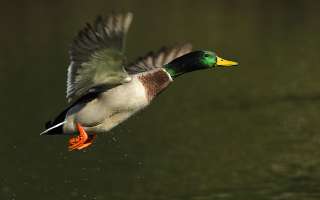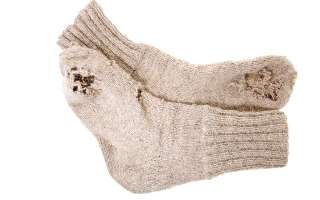210 items in this section. Displaying page 18 of 21
How Did Advertising Start in India?
The first newspaper in India was brought out by an Englishman James Augustus Hickey in 1780 who was stationed at Calcutta. The paper was brought out on Saturdays and was first called the Calcutta General Advertiser or Hickey’s Bengal Gazette. Publishing a newspaper is an expensive business as Hickey realised to his cost. He was losing money faster than the newspapers came out of the printing press. To make ends meet, Hickey decided to take on advertisements or ads....
Why do Doctors Examine the Pulse?
If you place the first three fingers of your hand on the inside of your wrist, a dull throbbing reverberates through your hand. Da-dub, da-dub, da-dub. Very reassuring, these gentle thuds, that remind us that our bodies are kicking along, and that, at least at last touch, we’re alive and well. By pulse we mean the regular throbbing of arteries caused by the successive contractions of the heart. During the action of the heart there is a pause....
How Many Kinds of Rhinos are There?
A modern day rhino or rhinoceros looks pretty much like its ancestor that existed on earth more than 30 million years ago. Its status as an animal “biggie” hasn’t changed much either. The ancestors of the modern-day rhinoceros – the 4 feet tall Uintatherium and the 15 feet high Indricotherium – were the largest land mammals ever. Today’s rhino is the largest living land mammal, after the African elephant, in terms of size and weight....
How do Ducks Stay in Water and not Get Wet?
When you get out of the swimming pool or bathtub, you are soaking wet. Had you been a duck, you would be swimming in water and yet not look really wet. It sounds crazy, but it’s true. The secret lies in the layer of smooth feathers, which keeps the water out and also helps the duck float. Moreover, these smart ducks make a kind of oil, which they spread on their feathers with their beaks. And since oil and water do not mix, the water just rolls off their bodies....
Which is the Oldest Church in India?
In 52 A.D. Thomas Didaemus, one of the 12 apostles of Jesus Christ is believed to have landed at Musiris (Cranganore) in Kerala. He made his first converts both Jews and Hindus at Palayur a town now in Trichur district, Kerala. There he built a small church with an altar, which he consecrated. This is supposed to be the oldest church in India. St. Thomas later moved to the east coast. and settled in Madras (now Chennai) in 64 A....
How do Flush Toilets Work?
Toilets are an amazing invention. Nearly every home has at least one. It is a very necessary utility needed in all homes to maintain hygiene. It is really amazing how this system works – you press a lever or pull a chain and whoosh! About two gallons of water rushes down into the porcelain bowl in three and four seconds. Gurgle-gurgle-urp it is clean and ready for use again! Toilets were known in India as early as three thousand years ago!...
Why do we Get Hiccups?
Hic! You’ve just hiccuped for what seems like the tenth time since you finished your big dinner. Wonder where these funny noises are coming from? The part to blame is your diaphragm, a dome-shaped muscle at the bottom of your chest, and all hiccups start here. The diaphragm almost always works perfectly. It pulls down when you inhale to help pull air into the lungs, and it pushes up when you exhale to help push air out of the lungs....
Why do Woollens Get Holes?
Most people think moths are responsible for eating up our woollen clothes, furs and rugs and making holes in them. This is because when we open these boxes in spring, a number of moths fly out. Don’t you believe it! Moths do not eat wool. It is the larvae (caterpillar) of certain moths that cause holes in our woollens. Caterpillars feed on wool, furs and other fabrics and damage them. But where do these caterpillars come from?...
What is Physiotherapy?
If you’ve ever been laid up in bed because of a broken leg, or with an arm in a cast, you’ll know how limp that limb feels when it is finally out of bandages. That’s because the muscles in that particular part of the body have not been used for so long that they’ve ‘forgotten’ how to function. They need to be re-taught their work, and this is where physiotherapy comes in. Physiotherapy is that branch of medicine, which makes use of physical agents or exercises to treat a disease or an injury....
How Does the Steam Engine Work?
In 1804 the first steam-powered engine ran, carrying some iron in Wales, in Britain. But it was almost twenty five years later, in 1829, that George Stephenson, a British engineer, designed the “rocket” that paved the way for railways all over Europe, Asia and America. How Does the Steam Engine Work? [Illustration by Shiju George] The steam engine is an example of a heat engine. Heat engines are those that convert heat energy into mechanical work....








